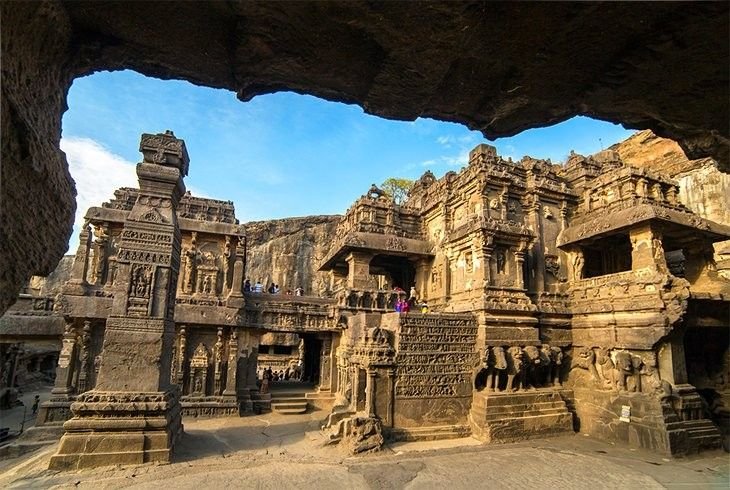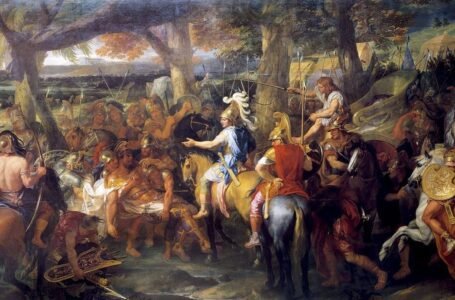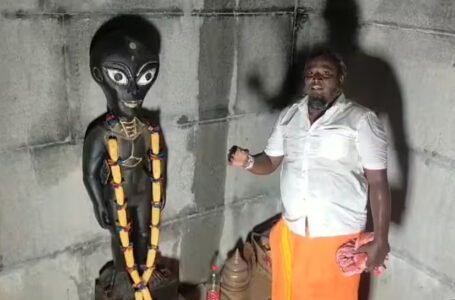Ajanta Caves: A Timeless Testament to Buddhist Culture and Architecture

Ajanta Caves, located in the Aurangabad district of Maharashtra, India, are a collection of 30 rock-cut Buddhist monuments dating back to the 2nd century BCE through 480 CE. Recognized as a UNESCO World Heritage Site, these caves are celebrated as masterpieces of Buddhist religious art, showcasing expressive paintings and intricate sculptures. Built in two distinct phases, the caves serve as significant examples of ancient Indian artistry, reflecting a blend of religious, cultural, and architectural brilliance. Carved into a 75-meter (246-foot) wall of basalt rock, the Ajanta Caves were primarily used as monasteries and worship halls, with their vibrant murals depicting stories from the life of Buddha and the Jataka tales. Once forgotten and hidden by dense jungle, the caves were rediscovered in 1819, sparking global interest and admiration for their historic and artistic significance.
History
The Ajanta Caves were constructed in two major phases. The first phase, during the Satavahana period (2nd century BCE to 1st century CE), focused on simpler designs, with emphasis on stupas rather than figurative sculptures. Caves from this period include 9, 10, 12, 13, and 15A, featuring chaitya-grihas (prayer halls) and vihāras (monastic cells). The murals in these caves depict early Buddhist traditions and stories from the Jataka tales, showcasing an artistic style influenced by the Mauryan and early Satavahana periods.
After a long dormancy, the second phase began around the 5th century CE, during the reign of Emperor Harishena of the Vakataka dynasty. This phase, influenced by the Mahayana tradition of Buddhism, saw the creation of more elaborate caves with intricate sculptures and vivid murals. Notable caves from this period include 1–8, 11, 14–29. Scholars, including Walter Spink, have argued that this phase of construction lasted only about two decades (460–480 CE), highlighting the remarkable speed and skill of the artisans. However, the activity ceased abruptly after Harishena’s death, leaving some caves incomplete.
Over time, the caves were used intermittently by monks and travelers, as noted by Chinese Buddhist pilgrims Faxian and Xuanzang. During the colonial era, the caves were rediscovered by Captain John Smith in 1819. Subsequently, efforts by the British, Hyderabad princely state, and the Archaeological Survey of India helped preserve and promote these historical treasures.
Architecture
The Ajanta Caves are carved into the rocky northern face of a horseshoe-shaped gorge along the Waghur River. These caves exhibit two primary architectural styles: chaitya-grihas (prayer halls) and vihāras (monastic halls).
Chaitya-Grihas
The chaitya-grihas are long rectangular halls with high vaulted ceilings and a central stupa for worship. They are divided into a nave and side aisles by a symmetrical row of pillars, allowing circumambulation around the stupa. Notable examples include Caves 9, 10, 19, and 26. The earlier chaitya halls, like Caves 9 and 10, feature plain octagonal columns and simpler designs, whereas later chaityas such as Cave 19 and Cave 26 include ornate sculptures, decorative capitals, and Buddha images integrated with the stupa.
Viharas
The viharas are square-shaped monastic halls surrounded by smaller cells used as dormitories. These halls typically include a central shrine housing a Buddha statue. The earlier vihāras are simple and lack shrines, while the later ones, such as Caves 1, 2, and 16, display detailed carvings, elaborate pillars, and decorative reliefs. Cave 6, for instance, consists of two levels connected by internal stairs, each with its own sanctuary.
The construction techniques were advanced for their time, with artisans excavating the rock from the roof downward and carving intricate details into the stone. The layered nature of the basalt rock presented challenges, but the craftsmen adapted their methods to achieve structural stability and artistic precision. The architecture reflects the transition from Hinayana to Mahayana Buddhism, with increasing emphasis on Buddha images and narrative reliefs.
Deities and Art
The art of the Ajanta Caves primarily revolves around the life of Buddha and the Jataka tales, which recount his past lives and moral teachings. These stories are vividly depicted through mural paintings and sculptures, making Ajanta one of the richest repositories of ancient Indian art.
Murals and Paintings
The mural paintings in the caves are among the finest examples of classical Indian art, characterized by their naturalistic style, fluidity, and expressive use of gestures and forms. These paintings often depict large groups of people, animals, and mythological beings, with a focus on emotional expression. The most celebrated murals are found in Caves 1, 2, 16, and 17, which illustrate scenes from the Jataka tales, royal processions, and the life of Buddha.
The paintings were created using natural pigments and a dry fresco technique, resulting in vibrant colors that have endured over centuries. The themes emphasize Buddhist values such as compassion, sacrifice, and enlightenment, reflecting the cultural and spiritual ethos of ancient India.
Sculptures
The sculptures in the Ajanta Caves include intricate carvings of the Buddha, bodhisattvas, and other Buddhist deities. These figures are often depicted in dynamic poses, adorned with ornaments, and surrounded by detailed reliefs of flora, fauna, and celestial beings. The stupa sculptures in the chaitya-grihas are central to Buddhist worship, symbolizing enlightenment and the Buddha’s presence. The later caves, such as Cave 26, feature elaborate depictions of the Buddha’s life, including the famous “Mahaparinirvana” scene showing the Buddha’s final moments.
The art in Ajanta also exhibits influences from Gandhara and Gupta styles, blending local and regional elements to create a distinct visual language. The combination of painting, sculpture, and architecture in these caves demonstrates the integration of artistic disciplines during ancient India’s golden age.
Conclusion
The Ajanta Caves are a testament to the artistic, spiritual, and cultural achievements of ancient India. Spanning centuries of Buddhist traditions, these caves serve as a window into the past, showcasing the evolution of religious art and architecture. From the simplicity of the early Satavahana period to the grandeur of the Vakataka era, the Ajanta Caves reflect a harmonious blend of devotion and creativity.
Rediscovered in the 19th century, the caves have since gained global recognition as a UNESCO World Heritage Site and a symbol of India’s rich heritage. Efforts to preserve these treasures continue, ensuring that future generations can admire their beauty and learn from their historical significance. Today, the Ajanta Caves stand as a monumental tribute to the enduring legacy of Buddhism and the unparalleled skill of ancient Indian artisans.


